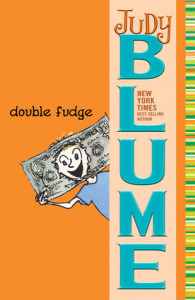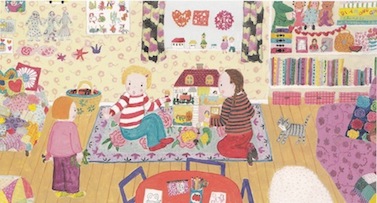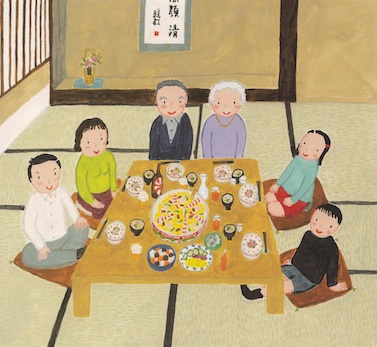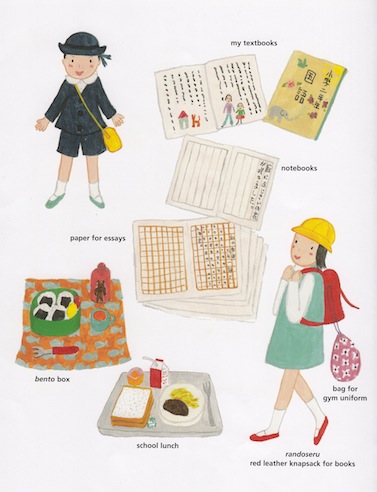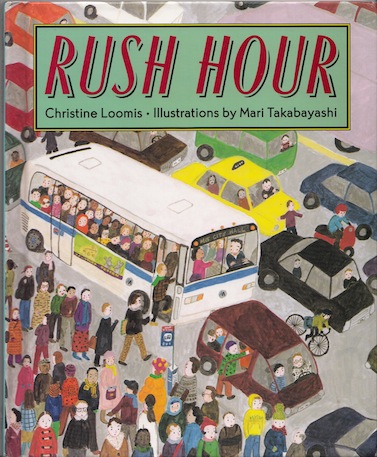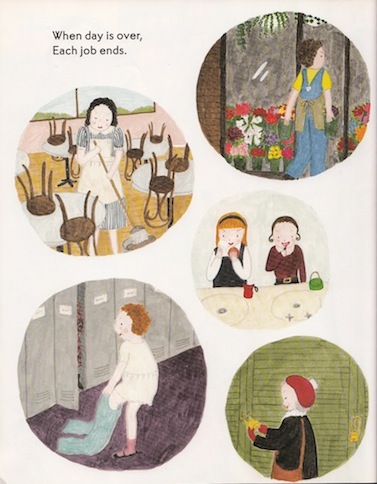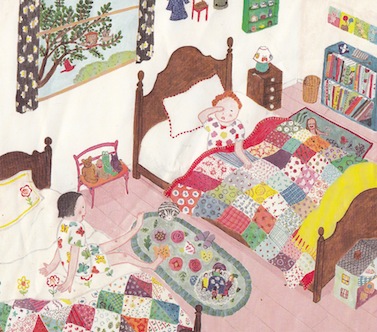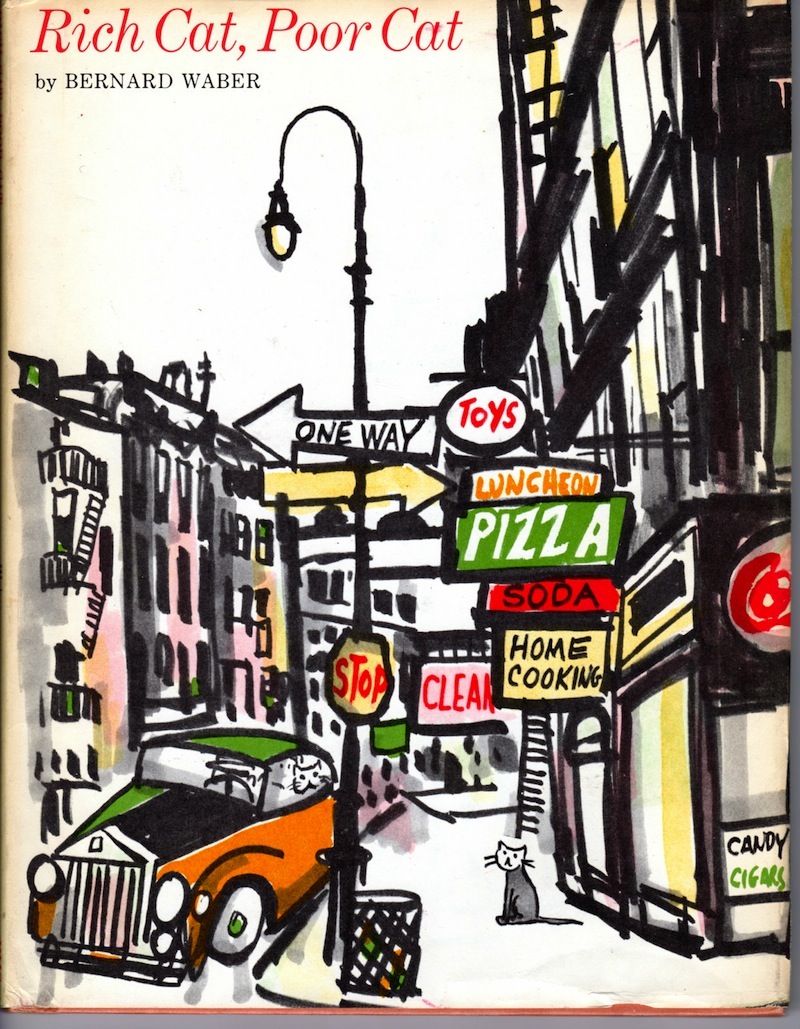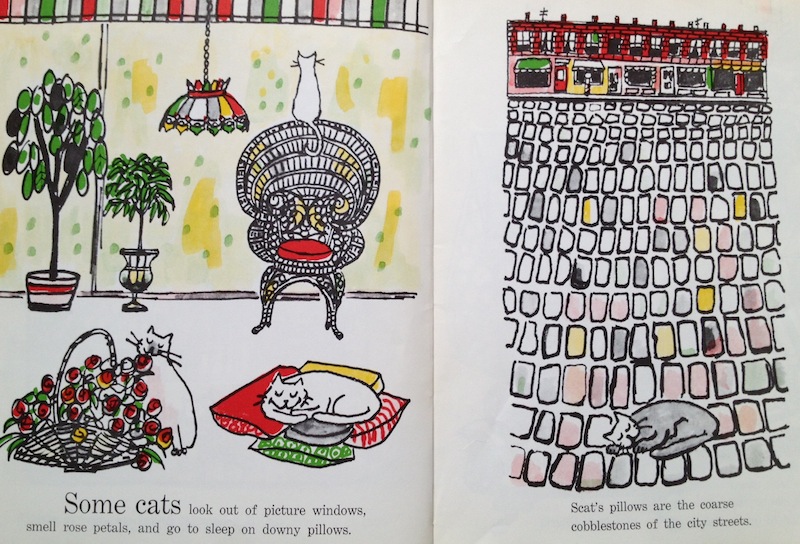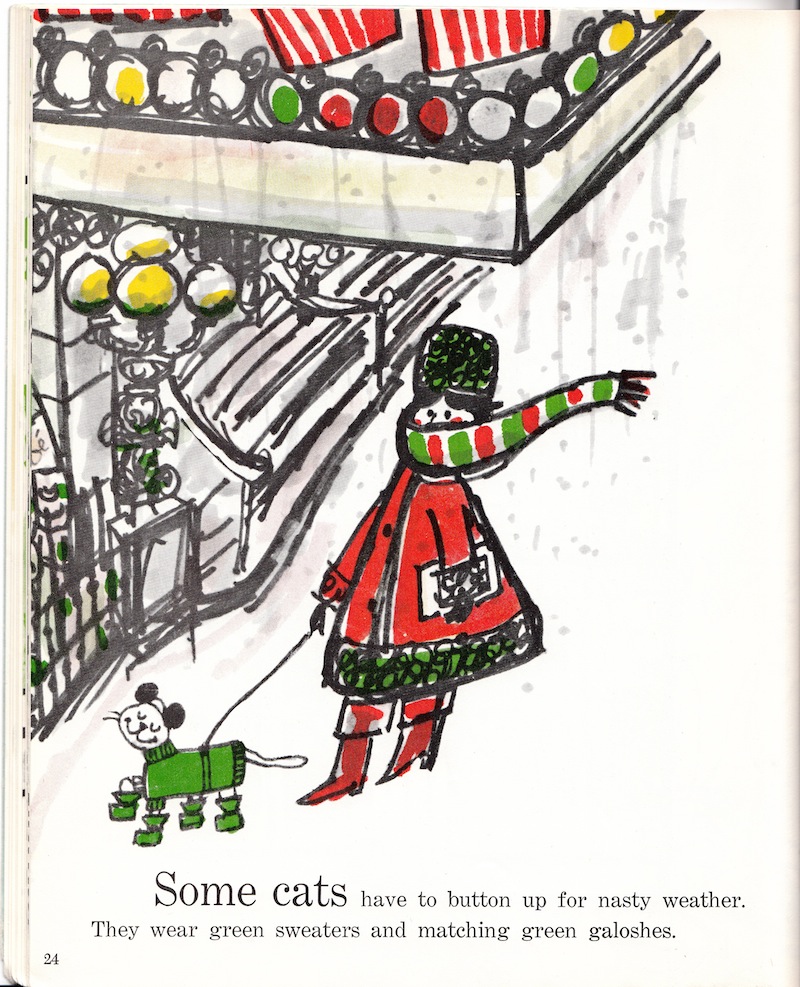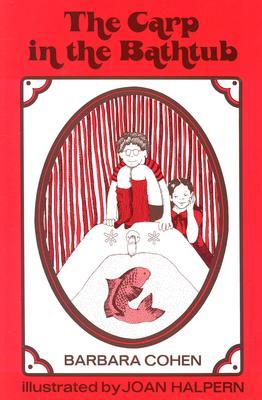 I’m Korean, but I grew up in Great Neck and I was obsessed with the All-of-a-Kind Family books by Sydney Taylor (I’ve written about them here and here). So I have a soft spot for any book set in old-time New York where the characters have names like Zipporah and Moishe and eat noodle kugel.
I’m Korean, but I grew up in Great Neck and I was obsessed with the All-of-a-Kind Family books by Sydney Taylor (I’ve written about them here and here). So I have a soft spot for any book set in old-time New York where the characters have names like Zipporah and Moishe and eat noodle kugel.
Each year when Passover rolls around, my husband’s family gets together for a raucous and extremely secularized seder. I’m not sure the kids have any idea what the holiday is actually about because they are too busy stuffing themselves with chocolate-covered matzoh and playing with the felt finger puppets representing the ten plagues. But I’ve developed my own Passover tradition, which is to break out the 1972 classic The Carp in the Bathtub by Barbara Cohen and force my children to appreciate its charms.
It’s about a nine-year-old girl and her little brother who live with their parents in a tenement in Brooklyn. It looks like the 1940s or thereabouts. Their mother is a wonderful cook who makes an especially mean gefilte fish. To make sure she has the fattest, freshest fish every year for their seder, she always buys a live carp a week early and lets it swim in the family’s bathtub until it’s butchering time.
Love this illustration of the mom, walking so purposefully in her polka-dot dress:
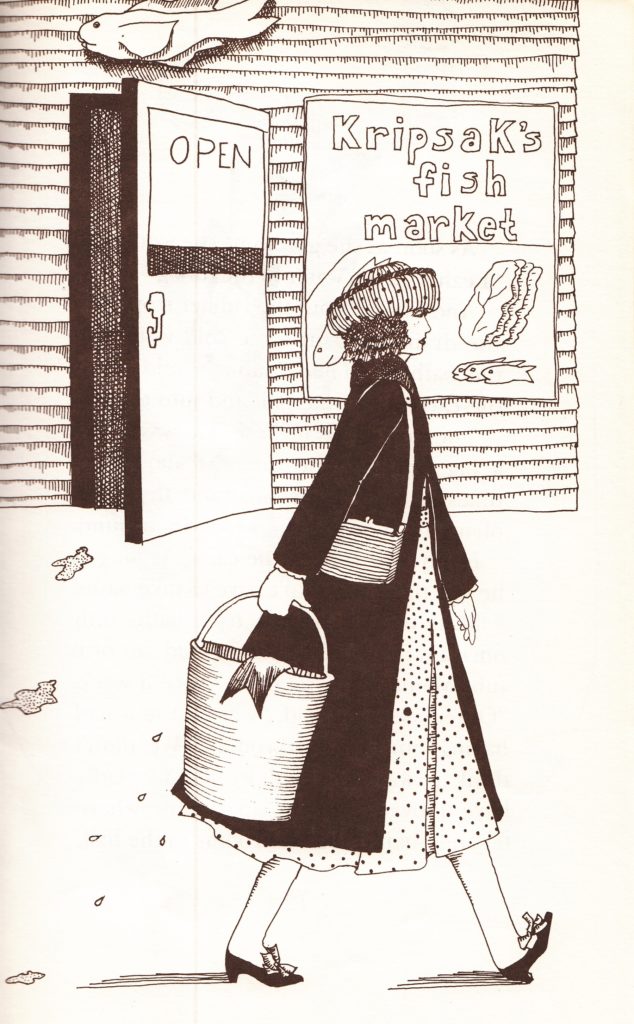 The family’s tub carp is a beloved annual ritual. The kids don’t have to bathe for a whole week and it’s the closest they ever get to having a pet.
The family’s tub carp is a beloved annual ritual. The kids don’t have to bathe for a whole week and it’s the closest they ever get to having a pet.
“Every time Harry or I had to go to the toilet, we would grab a crust of bread or a rusty lettuce leaf from the kitchen. While we sat on the toilet, we fed the bread or the lettuce leaf to the carp. This made going to the bathroom really fun, instead of just a waste of time.”
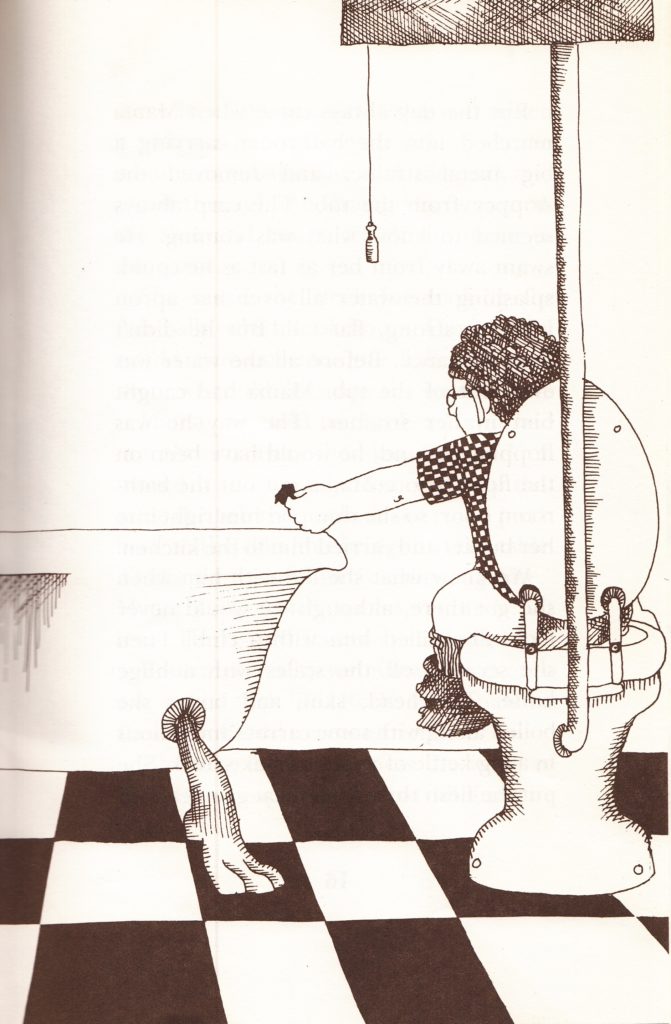
Hands down, the most memorable picture in the book: The brother on the toilet.
One year they get especially attached to their carp. His eyes are brighter and he seems “unusually playful and intelligent.”
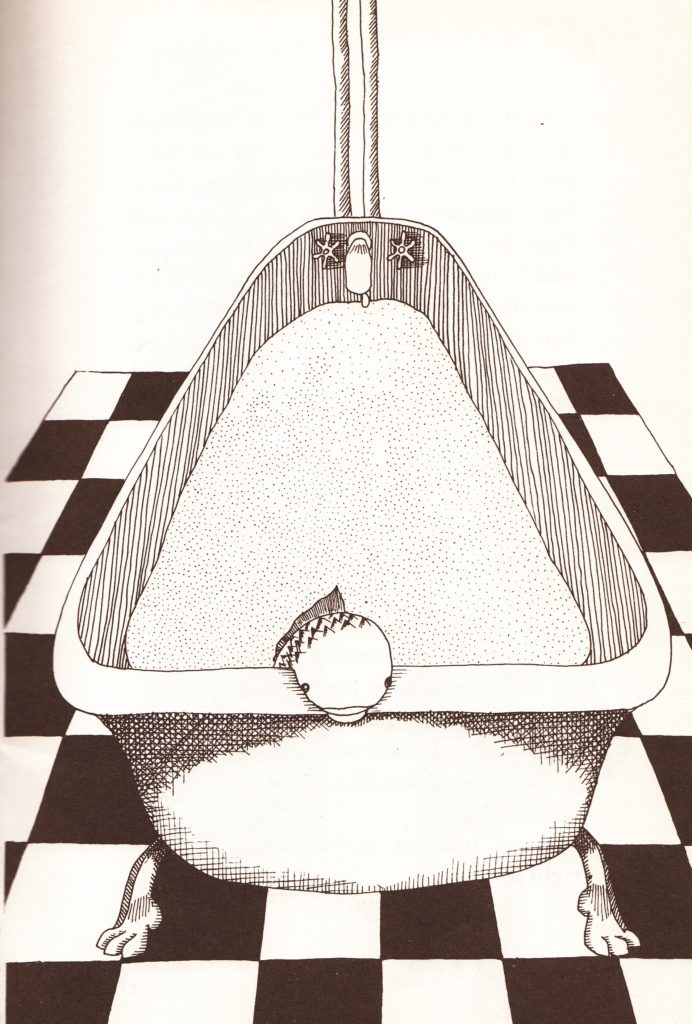
“There was something about his mouth that made him seem to be smiling at us.”
So the kids hatch a plan to save their friend’s life by sneaking him out in a bucket and begging their downstairs neighbor, the recently widowed Mrs. Ginzburg, to keep him in her tub.

“A few drops of water dripped onto the oriental rug Mrs. Ginzburg had bought at Abraham and Straus with Mr. Ginzburg’s Christmas bonus two years before.” (Love this!!!)
I love how gigantic all the adults are in the illustrations. They suit the story’s point of view perfectly: the adults are firmly in charge, but they’re not intimidating. They’re more like gentle, oversized, somewhat inscrutable giants. The storytelling has a sweet, gentle humor and even though the stakes aren’t super high, Cohen gives the plot some genuine drama.
But warning: Any child reading this book is going to beg you to let them keep a giant fish in the bathtub.
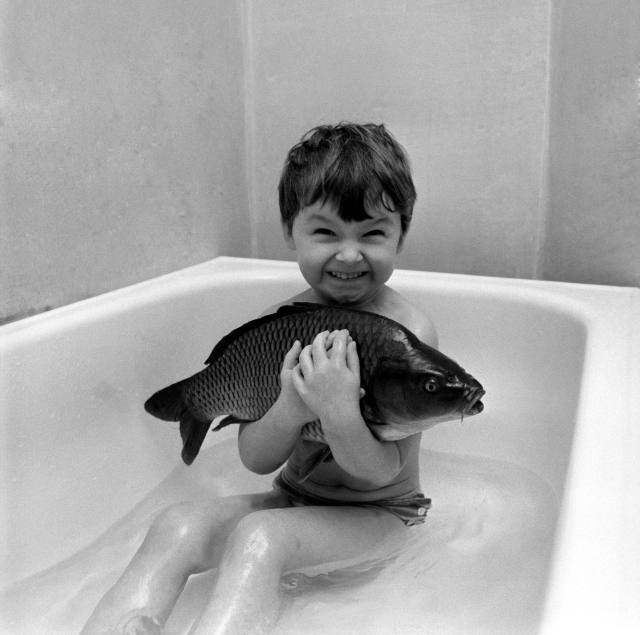
Christmas carp, c.1971 (photo courtesy of ČTK / Czech News Agency)
Today, when I was poking around the web I learned that keeping a fish in a bathtub for a couple of days is actually a well-established Christmas tradition in Slovakia, Poland and the Czech Republic. The idea is not only that this keeps the fish fresh, but that a few days living in clean water helps to flush mud from the fish’s digestive tract. (Carp are bottom feeders.) And it’s just as common for the kids to get attached to their pet fish and mourn them when the big day arrives.

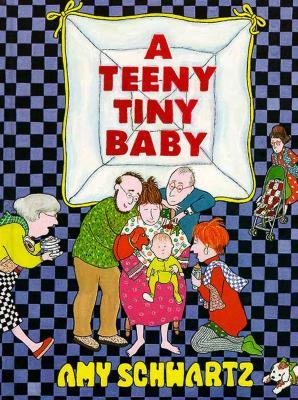
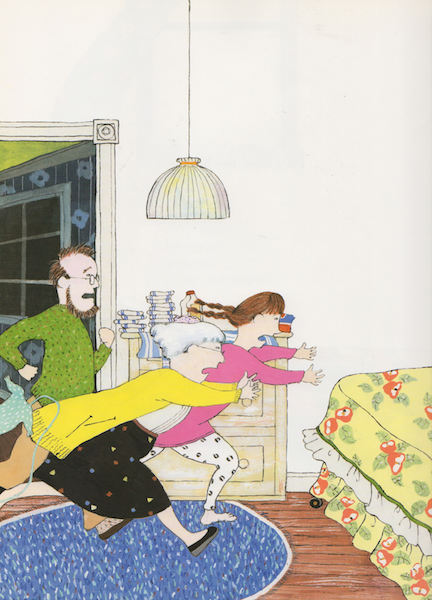 The story is told from the perspective of an infant in Brooklyn in his first few weeks of life. He reports his experiences at the center of the household —everybody cooing and fussing over him — in the most matter-of-fact way.
The story is told from the perspective of an infant in Brooklyn in his first few weeks of life. He reports his experiences at the center of the household —everybody cooing and fussing over him — in the most matter-of-fact way.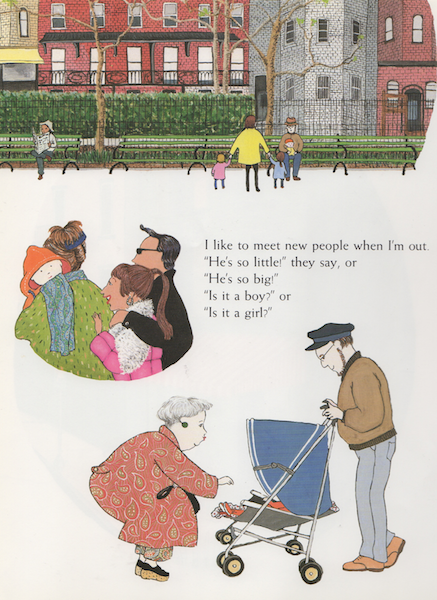
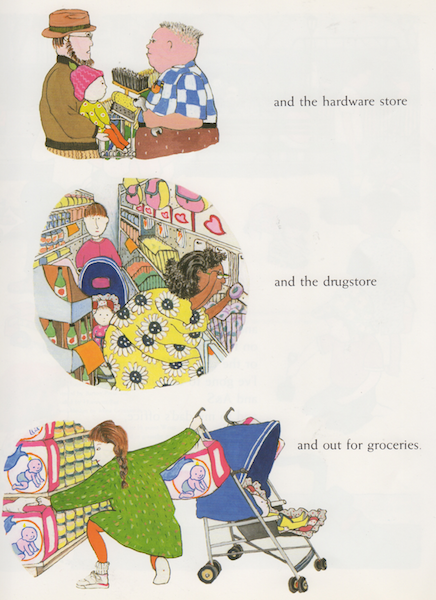
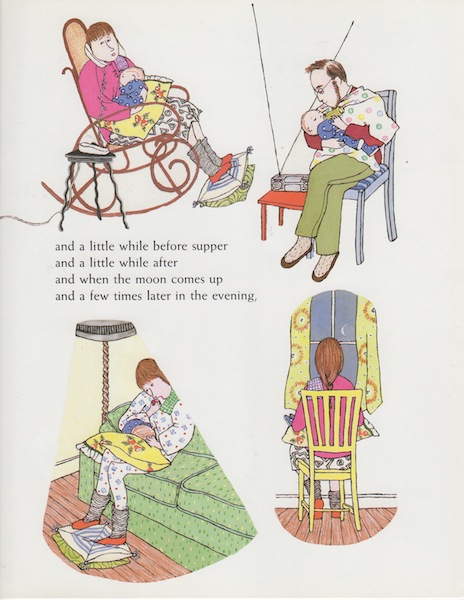 After the Teeny Tiny Baby hardcovers disappeared from Amazon, I noticed you could still find board book versions of the book. So I bought a few and gave those as gifts. But these days I can only find secondhand copies of this incredible book for sale. Heartbreaking!
After the Teeny Tiny Baby hardcovers disappeared from Amazon, I noticed you could still find board book versions of the book. So I bought a few and gave those as gifts. But these days I can only find secondhand copies of this incredible book for sale. Heartbreaking! I might have to buy some used copies as gifts. I know this might gross out some new moms so maybe I’ll also include a bottle of Purell.
I might have to buy some used copies as gifts. I know this might gross out some new moms so maybe I’ll also include a bottle of Purell.